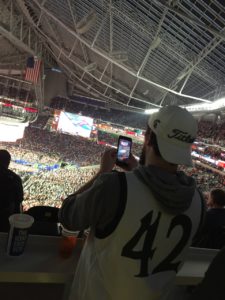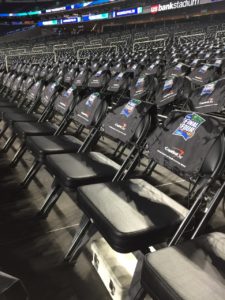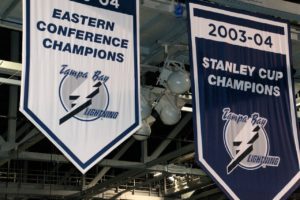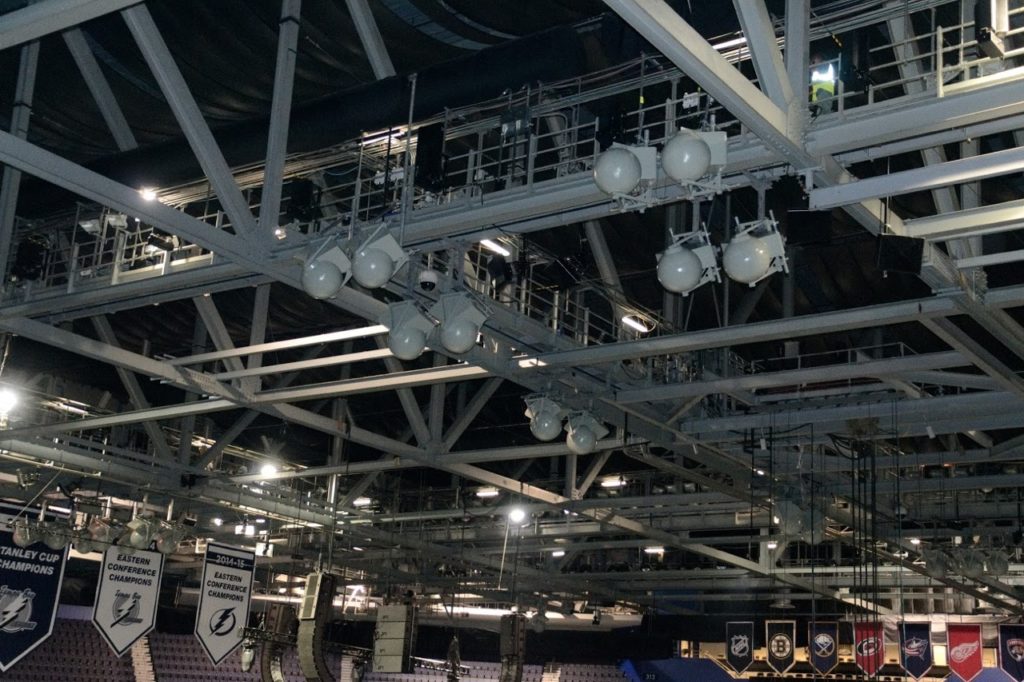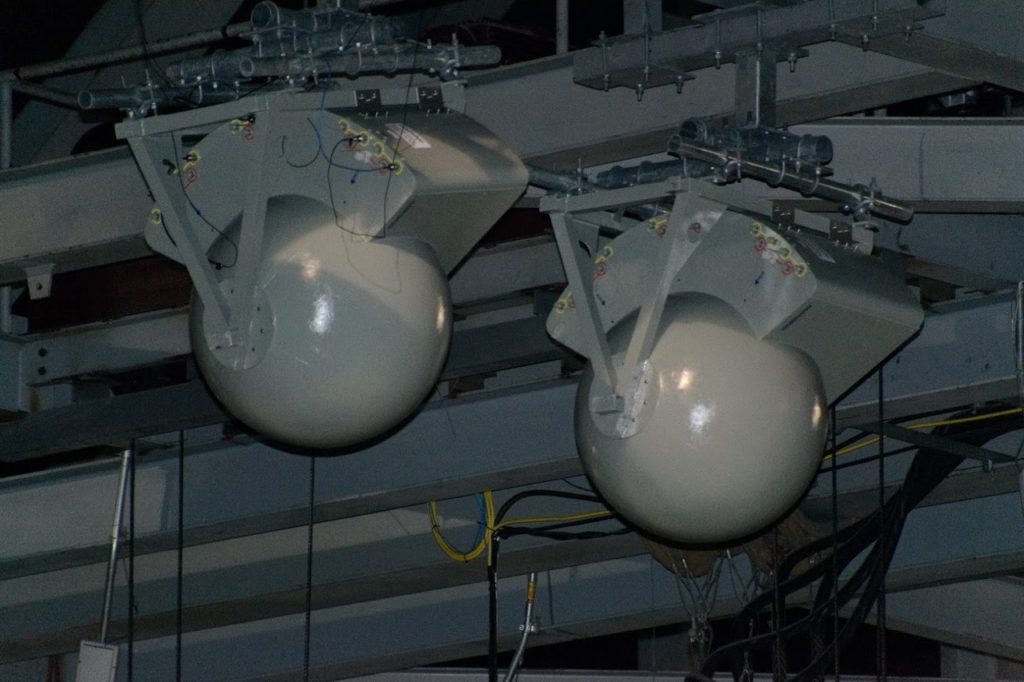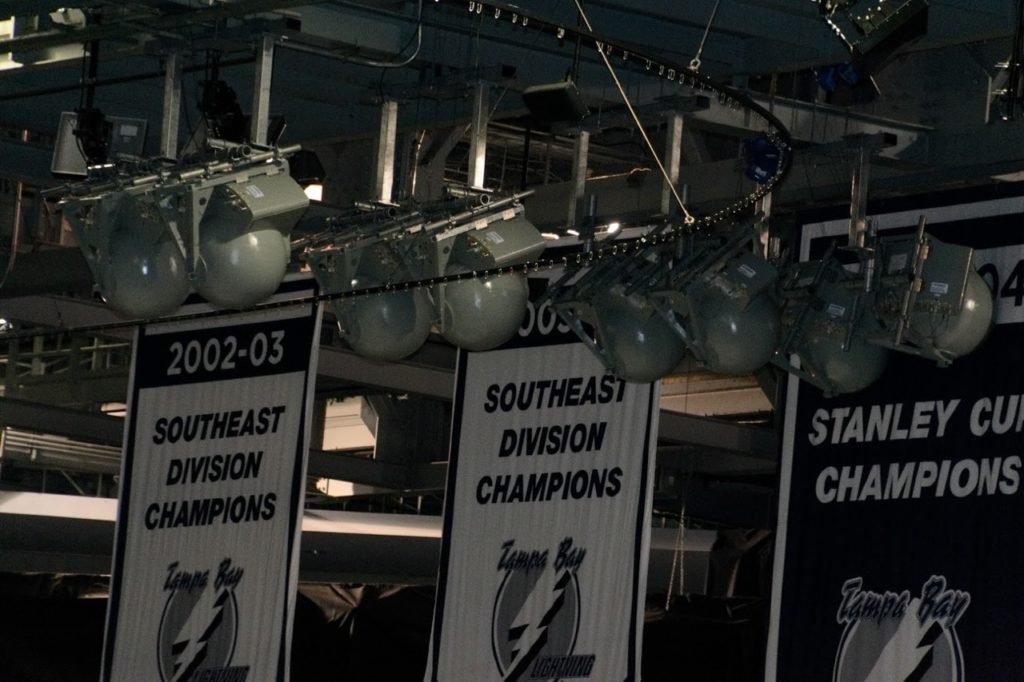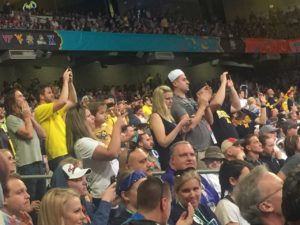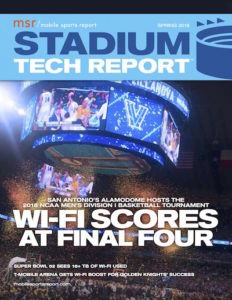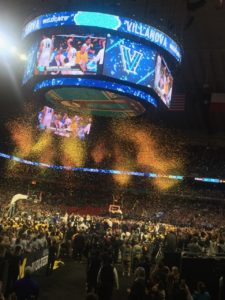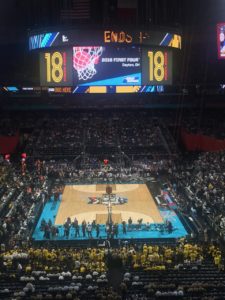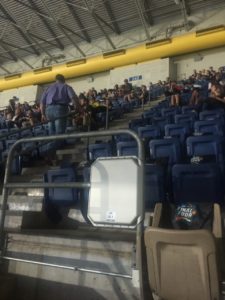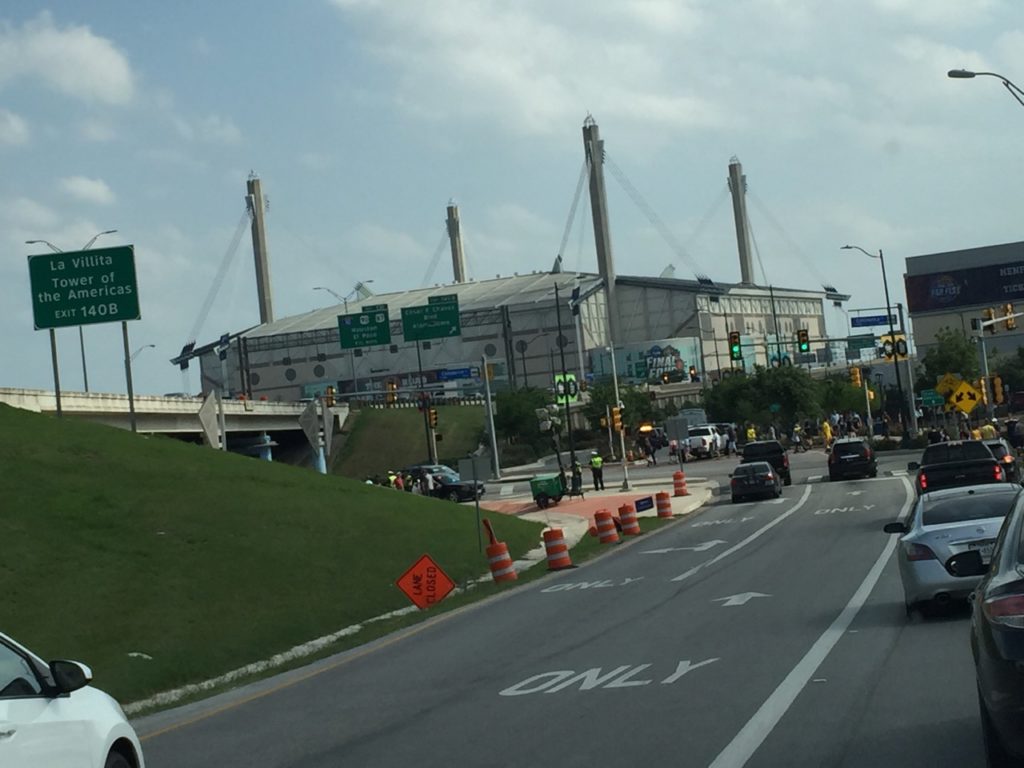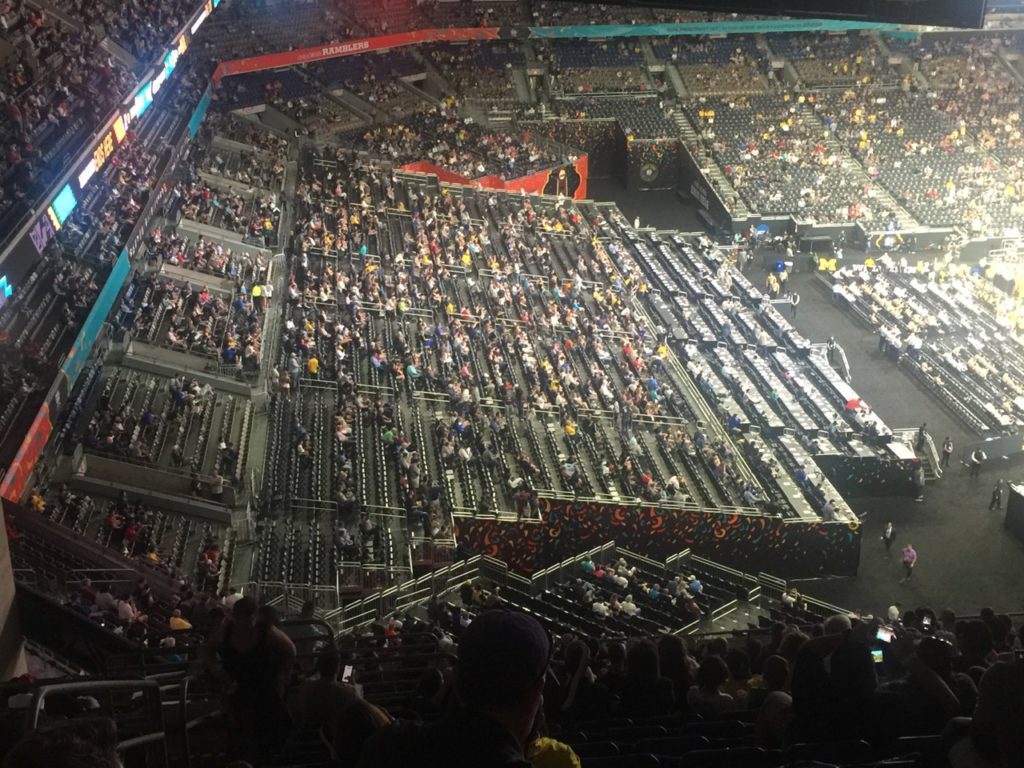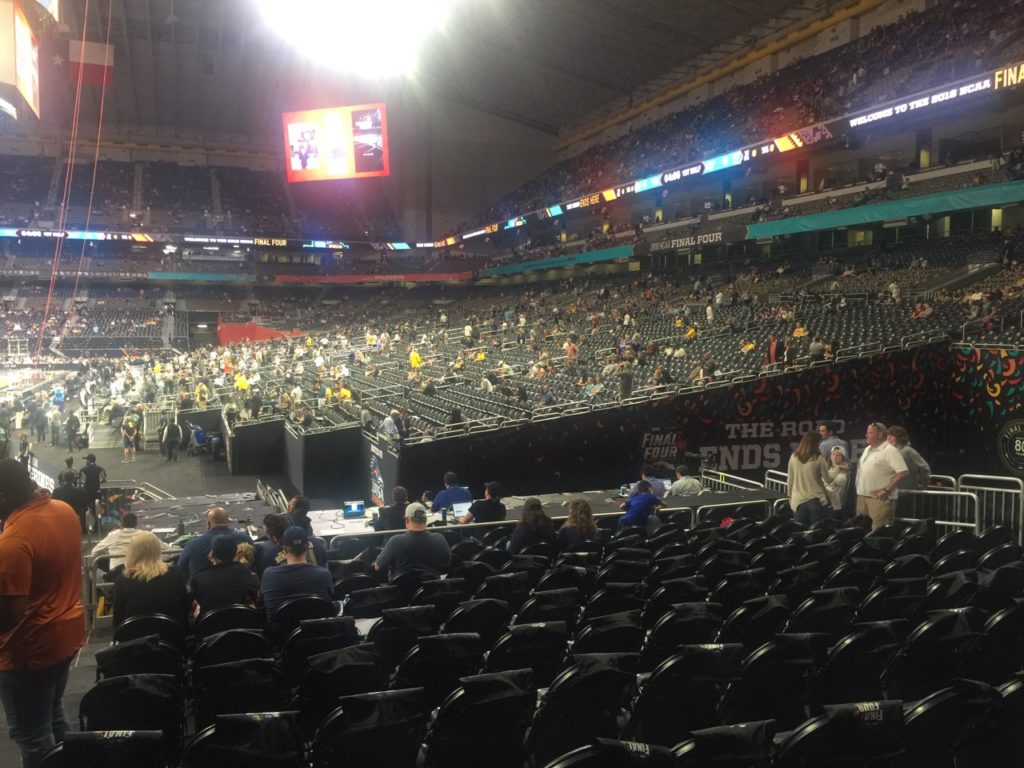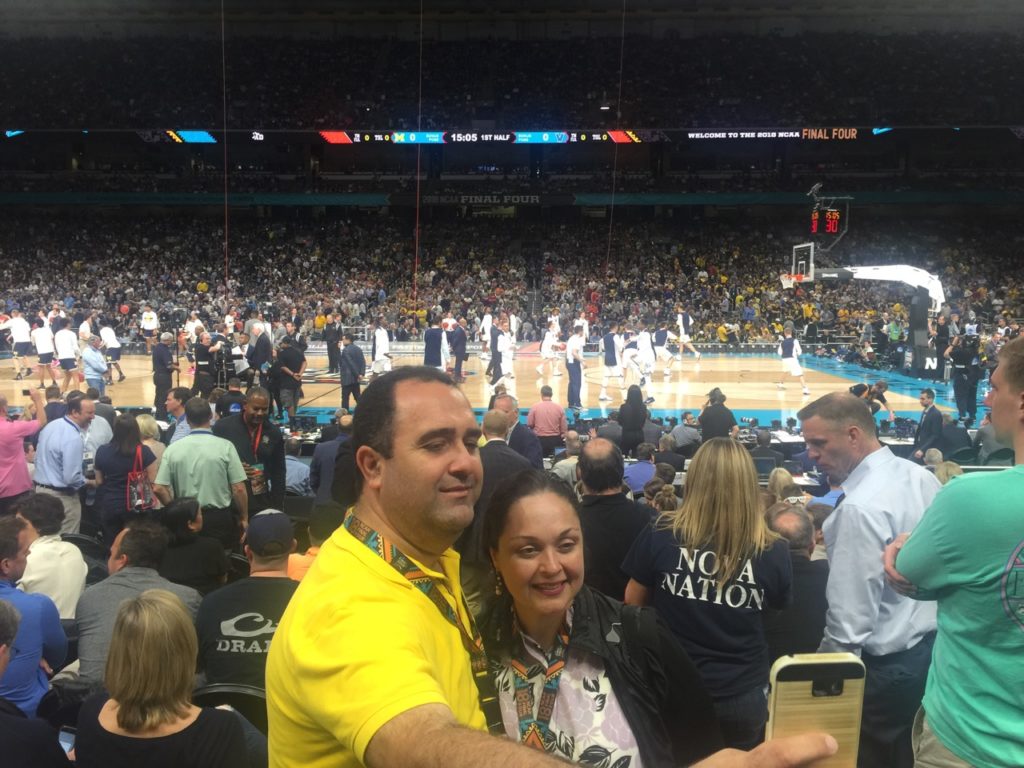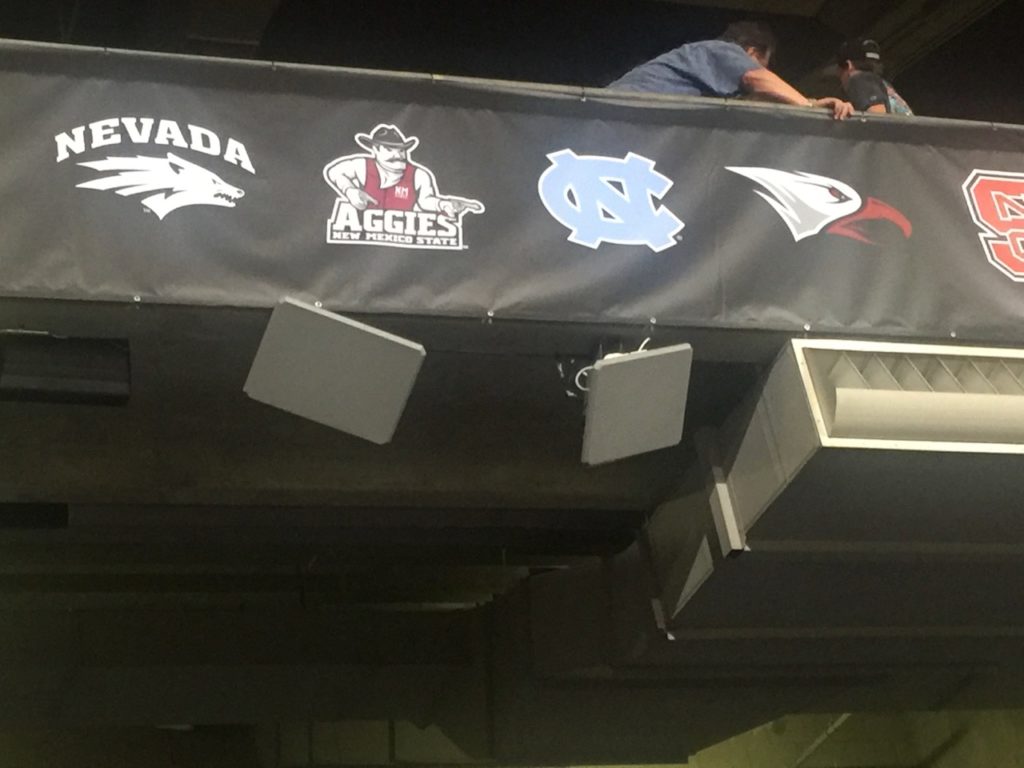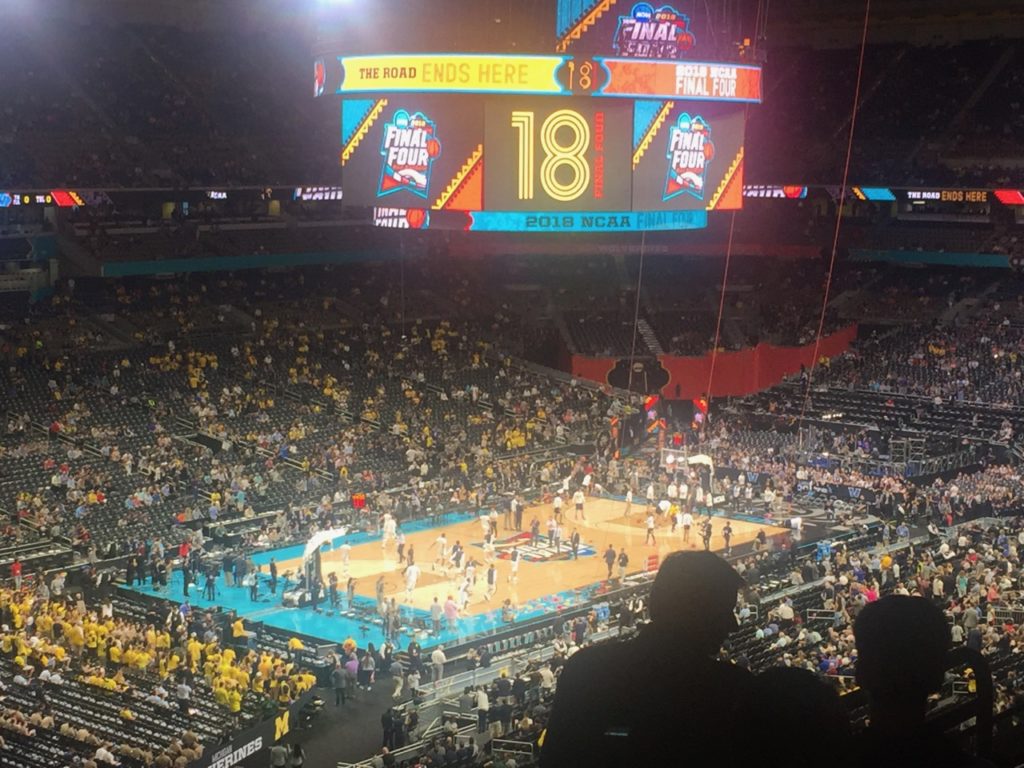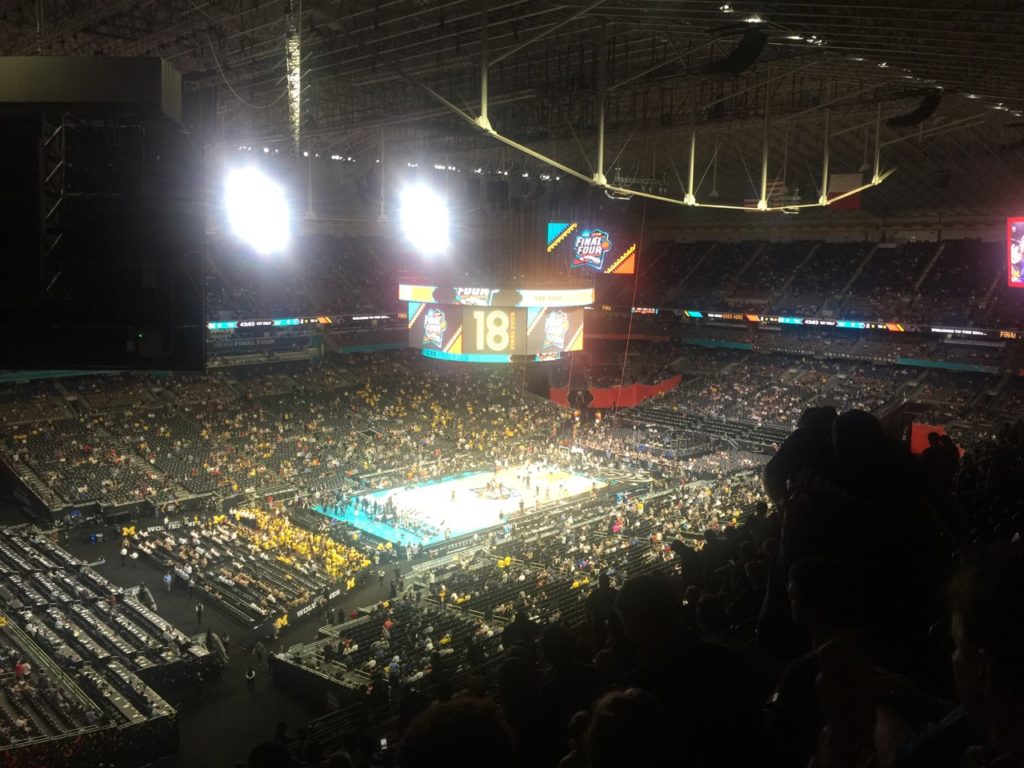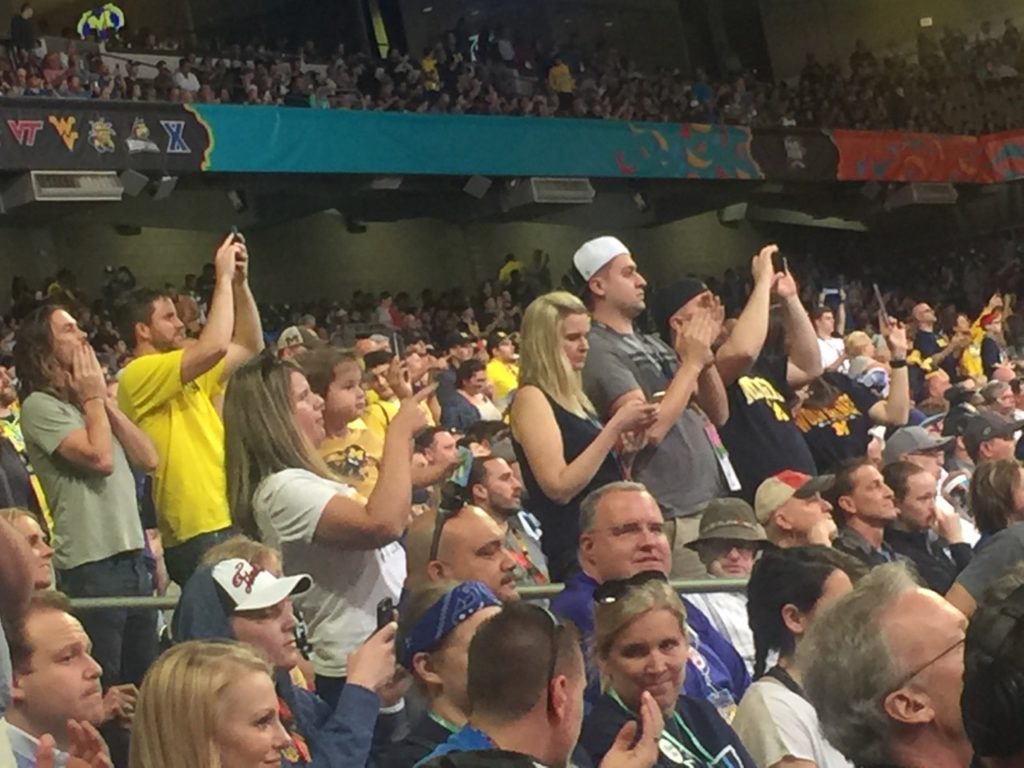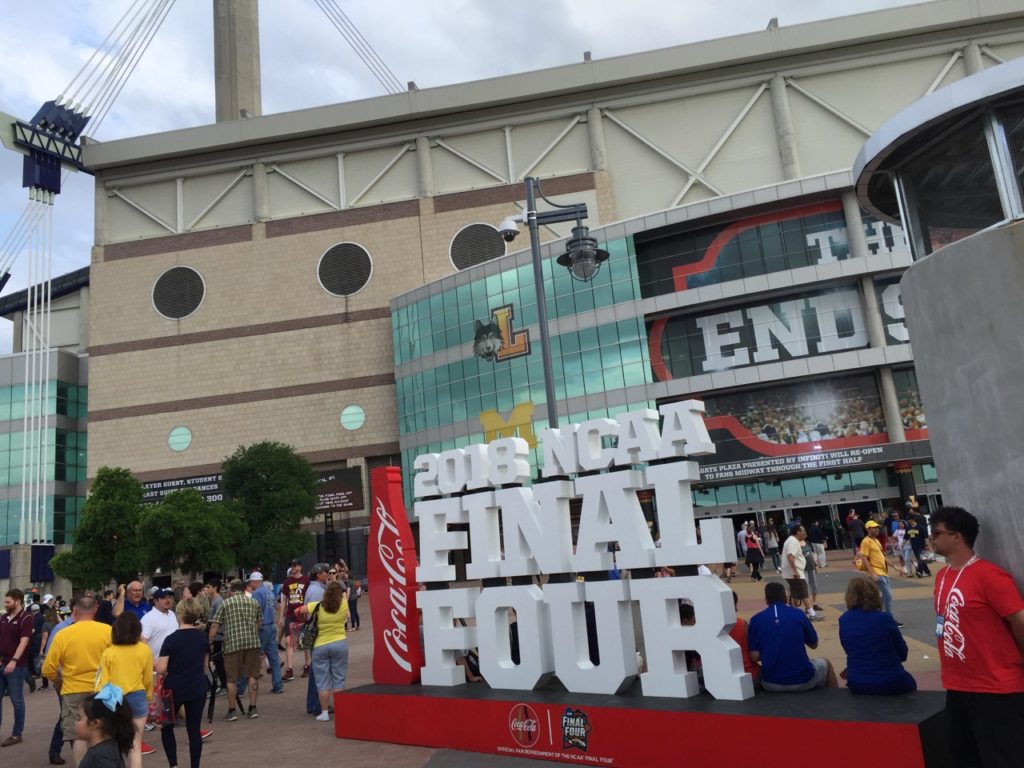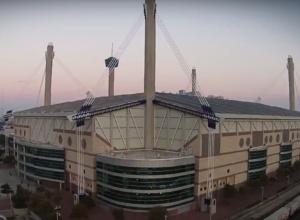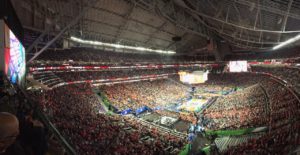
The Final Four generated record Wi-Fi totals this year at U.S. Bank Stadium in Minneapolis. Credit all photos: Paul Kapustka, MSR (click on any picture for a larger image)
The semifinal matches on April 6 between Auburn and Virginia and Texas Tech and Michigan State saw fans use the second-highest single-day Wi-Fi total we have seen reported, with 17.8 TB of data used. The Wi-Fi total surpassed the 16.31 TB of Wi-Fi data used in the same stadium during Super Bowl 52 on Feb. 4, 2018; only Super Bowl 53 this year at Mercedes-Benz Stadium in Atlanta, with 24.05 TB of Wi-Fi used, has seen a bigger data day (according to our unofficial list of such data events).
According to the NCAA figures, the network saw 51,227 unique users on Final Four Saturday, out of 72,711 in attendance. The 70 percent take rate just beats the 69 percent take rate seen at Super Bowl 53, an overall sign perhaps that bucket-event fans are increasingly turning to stadium Wi-Fi for connectivity. At Super Bowl 52 in U.S. Bank Stadium, there were 40,033 unique users on the Wi-Fi network (out of 67,612 in attendance), a take rate of 59 percent.
The peak concurrent user number from Final Four Saturday of 31,141 was also an overall record, beating Super Bowl 53’s mark of 30,605. (Super Bowl 53 had 70,081 fans in attendance for the Feb. 3 game between the New England Patriots and the Los Angeles Rams.) The Wi-Fi network numbers for Monday’s championship game (won by Virginia 85-77 over Texas Tech in overtime) saw big numbers itself, with 13.4 TB of total data used, and 48,449 unique connections and 29,487 peak concurrent users (out of 72,062 in attendance). Monday’s game also produced a peak throughput number of 11.2 Gbps just after the game ended. The total official Wi-Fi data used during the semifinals and final was 31.2 TB.According to stadium network officials, there were 1,414 active Cisco access points for the Final Four games, with some permanent Wi-Fi APs not being used because they were covered by the temporary seats that extended out to the court built in the middle of where the football field usually is. However, the temporary seating was covered by an additional 250 APs and 50-plus switches in a temporary network built by AmpThink and the stadium network team (look for a deeper profile of the temporary network in our upcoming Summer STADIUM TECH REPORT issue!).
Speed tests taken by Mobile Sports Report showed robust Wi-Fi connectivity all around the venue on both days, with marks like a 48.6 Mbps download and 44.0 Mbps upload in the higher seating section during pregame for Saturday’s events, another mark of 45.3 Mbps / 38.7 Mbps on the third-level main concourse close to Saturday’s tipoff, and a mark of 54.8 Mbps / 38.3 Mbps on the main lower-level concourse just after tipoff of Monday’s championship game.
“The traffic we experience on Wi-Fi networks at the Final Four is considerable each year, and Minneapolis was no exception,” said David Worlock, director of media coordination and statistics for the NCAA tournament. “We were completely satisfied with the performance of the network throughout the weekend.”THE MSR TOP 20 FOR WI-FI
1. Super Bowl 53, Mercedes-Benz Stadium, Atlanta, Ga., Feb. 3, 2019: Wi-Fi: 24.05 TB
2. NCAA Men’s 2019 Final Four semifinals, U.S. Bank Stadium, Minneapolis, Minn., April 6, 2019: Wi-Fi: 17.8 TB
3. Super Bowl 52, U.S. Bank Stadium, Minneapolis, Minn., Feb. 4, 2018: Wi-Fi: 16.31 TB
4. NCAA Men’s 2019 Final Four championship, U.S. Bank Stadium, Minneapolis, Minn., April 8, 2019: Wi-Fi: 13.4 TB
5. 2018 College Football Playoff Championship, Alabama vs. Georgia, Mercedes-Benz Stadium, Atlanta, Ga., Jan. 8, 2018: Wi-Fi: 12.0 TB*
6. Super Bowl 51, NRG Stadium, Houston, Feb. 5, 2017: Wi-Fi: 11.8 TB
7. Atlanta Falcons vs. Philadelphia Eagles, Lincoln Financial Field, Philadelphia, Pa., Sept. 6, 2018: Wi-Fi: 10.86 TB
8. Super Bowl 50, Levi’s Stadium, Santa Clara, Calif., Feb. 7, 2016: Wi-Fi: 10.1 TB
9. Taylor Swift Reputation Tour, Gillette Stadium, Foxborough, Mass., July 27, 2018: Wi-Fi: 9.76 TB
10. Minnesota Vikings vs. Philadelphia Eagles, NFC Championship Game, Lincoln Financial Field, Philadelphia, Pa., Jan. 21, 2018: Wi-Fi: 8.76 TB
11. Jacksonville Jaguars vs. New England Patriots, AFC Championship Game, Gillette Stadium, Foxborough, Mass., Jan. 21, 2018: Wi-Fi: 8.53 TB
12. Taylor Swift Reputation Tour, Broncos Stadium at Mile High, May 25, 2018: Wi-Fi: 8.1 TB
13. Kansas City Chiefs vs. New England Patriots, Gillette Stadium, Foxborough, Mass., Sept. 7, 2017: Wi-Fi: 8.08 TB
14. SEC Championship Game, Alabama vs. Georgia, Mercedes-Benz Stadium, Atlanta, Ga., Dec. 1, 2018: Wi-Fi: 8.06 TB*
15. Green Bay Packers vs. Dallas Cowboys, Divisional Playoffs, AT&T Stadium, Arlington, Texas, Jan. 15, 2017: Wi-Fi: 7.25 TB
16. Stanford vs. Notre Dame, Notre Dame Stadium, South Bend, Ind., Sept. 29, 2018: 7.19 TB
17. (tie) Southern California vs. Notre Dame, Notre Dame Stadium, South Bend, Ind., Oct. 21, 2017: 7.0 TB
Arkansas State vs. Nebraska, Memorial Stadium, Lincoln, Neb., Sept 2, 2017: Wi-Fi: 7.0 TB
18. WrestleMania 32, AT&T Stadium, Arlington, Texas, April 3, 2016: Wi-Fi: 6.77 TB
19. Wisconsin vs. Nebraska, Memorial Stadium, Lincoln, Neb., Oct. 7, 2017: Wi-Fi: 6.3 TB
20. Super Bowl 49, University of Phoenix Stadium, Glendale, Ariz., Feb. 1, 2015: Wi-Fi: 6.23 TB
* = pending official exact data
